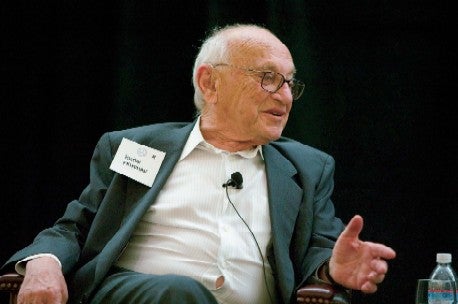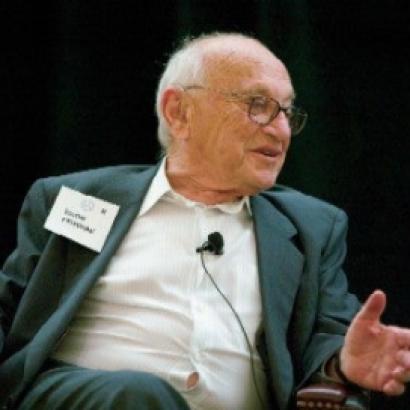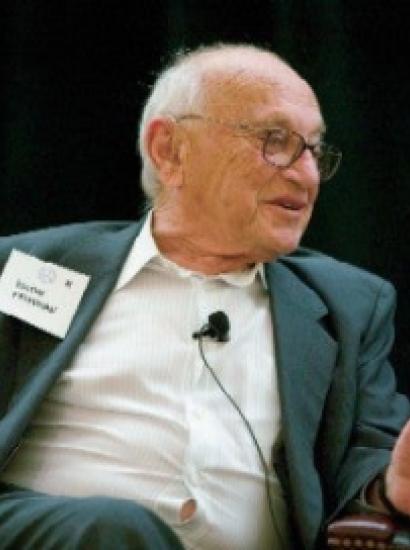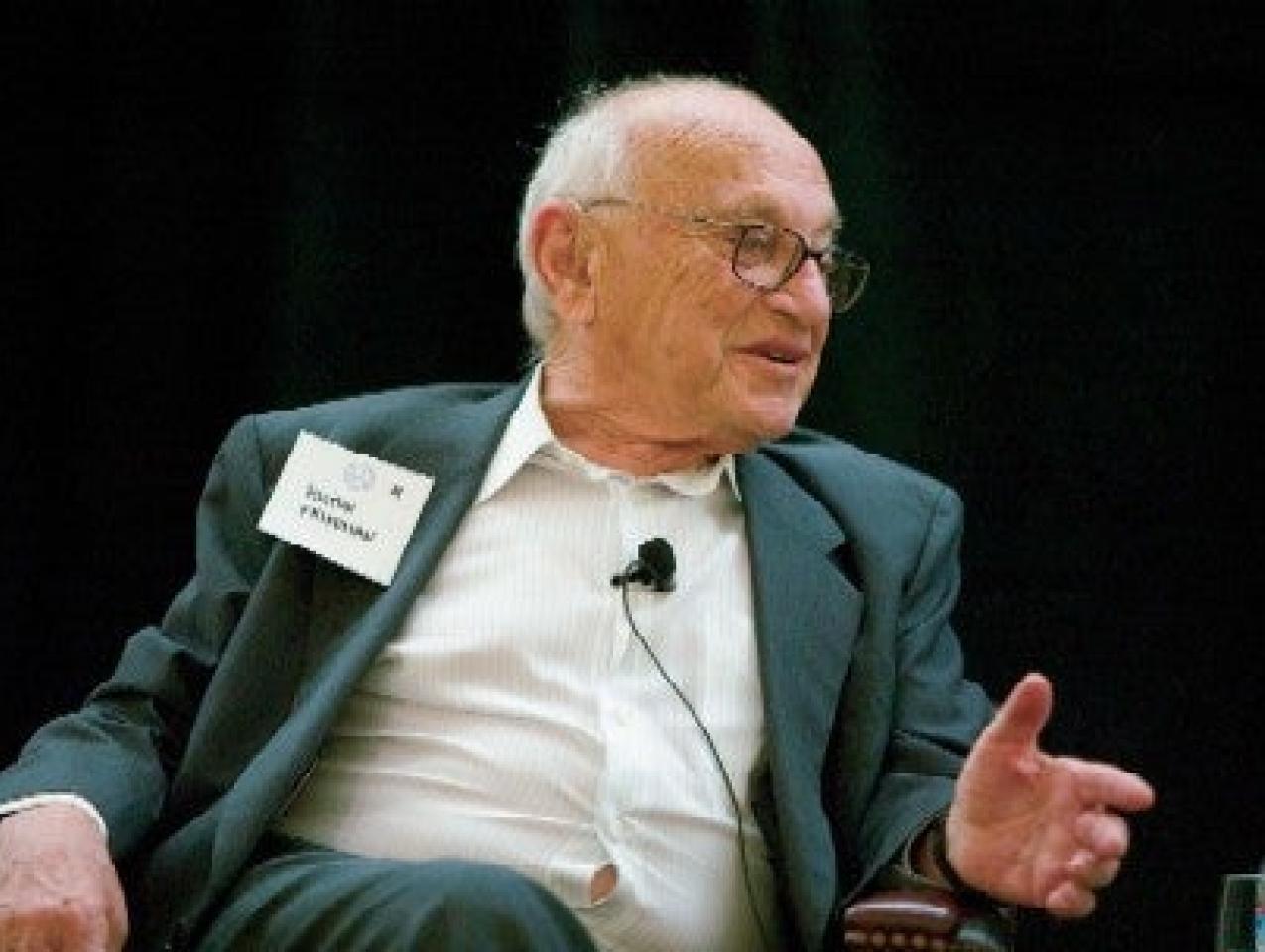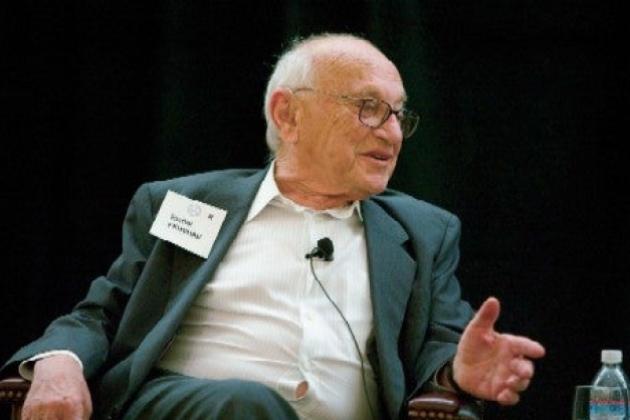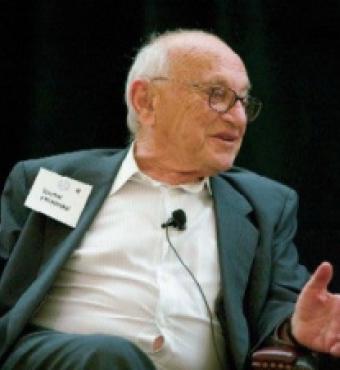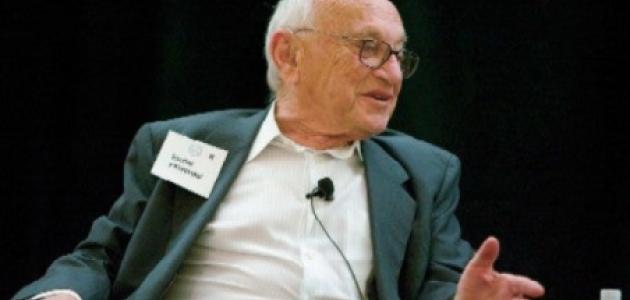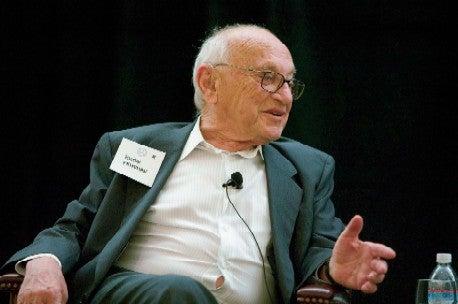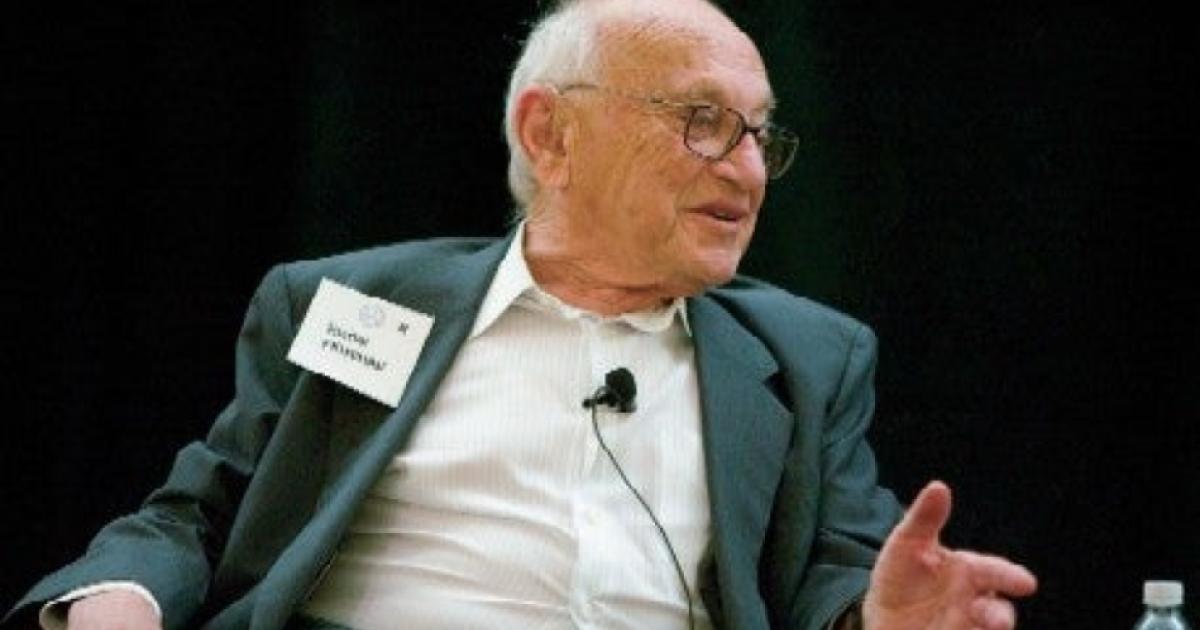- Health Care
Since the end of World War II, the provision of medical care in the United States and other advanced countries has displayed three major features: first, rapid advances in the science of medicine; second, large increases in spending, both in terms of inflation-adjusted dollars per person and the fraction of national income spent on medical care; and third, rising dissatisfaction with the delivery of medical care, on the part of both consumers of medical care and physicians and other suppliers of medical care.
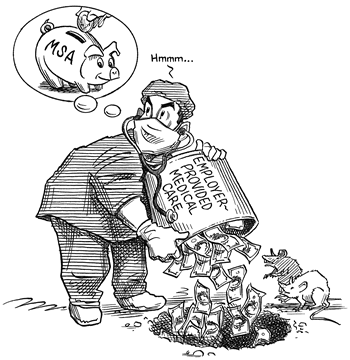 |
| Illustration by Taylor Jones for the Hoover Digest.
|
Rapid technological advances have occurred repeatedly since the Industrial Revolution—in agriculture, steam engines, railroads, telephones, electricity, automobiles, radio, television, and, most recently, computers and telecommunication. The other two features seem unique to medicine. It is true that spending initially increased after nonmedical technical advances, but the fraction of national income spent did not increase dramatically after the initial phase of widespread acceptance. On the contrary, technological development lowered cost, so that the fraction of national income spent on food, transportation, communication, and much more has gone down, releasing resources to produce new products or services. Similarly, there seems no counterpart in these other areas to the rising dissatisfaction with the delivery of medical care.
International Comparison
These developments in medicine have been worldwide. By their very nature, scientific advances know no geographic boundaries. Data on spending are readily available for 29 Organization for Economic Cooperation and Development (OECD) countries. In every one, medical spending has gone up significantly both in inflation-adjusted dollars per person and as a fraction of national income. In 1997, the United States spent 14 percent of gross domestic product on medical care, the highest of any OECD country. Germany was a distant second at 11 percent; Turkey was the lowest at 4 percent.
A key difference between medical care and the other technological revolutions is the role of government. In other technological revolutions, the initiative, financing, production, and distribution were primarily private, though government sometimes played a supporting or regulatory role. In medical care, government has come to play a leading role in financing, producing, and delivering medical service. Direct government spending on health care exceeds 75 percent of total health spending for 15 OECD countries. The United States is next to the lowest of the 29 countries, at 46 percent. In addition, some governments indirectly subsidize medical care through favorable tax treatment. For the United States, such subsidization raises the fraction of health spending financed directly or indirectly by government to more than 50 percent.
What are countries getting for the money they are spending on medical care? What is the relation between input and output? Spending on medical care provides a reasonably good measure of input, but, unfortunately, there is no remotely satisfactory objective measure of output.
Ultimately, the purpose of this article is to examine the situation in the United States. I have mentioned the data on the OECD countries primarily to document the two (related?) respects in which the United States is exceptional: we spend a higher percentage of national income on medical care (and more per capita) than any other OECD country, and our government finances a smaller fraction of that spending than all countries except Korea.
Why Third-Party Payment?
Two simple observations are key to explaining both the high level of spending on medical care and the dissatisfaction with that spending. The first is that most payments to physicians or hospitals or other caregivers for medical care are made not by the patient but by a third party—an insurance company or employer or governmental body. The second is that nobody spends somebody else’s money as wisely or as frugally as he spends his own. These statements apply equally to other OECD countries. They do not by themselves explain why the United States spends so much more than other countries.
No third party is involved when we shop at a supermarket. We pay the supermarket clerk directly: the same for gasoline for our car, clothes for our back, and so on down the line. Why, by contrast, are most medical payments made by third parties? The answer for the United States begins with the fact that medical care expenditures are exempt from the income tax if, and only if, medical care is provided by the employer. If an employee pays directly for medical care, the expenditure comes out of the employee’s after-tax income. If the employer pays for the employee’s medical care, the expenditure is treated as a tax-deductible expense for the employer and is not included as part of the employee’s income subject to income tax. That strong incentive explains why most consumers get their medical care through their employers or their spouses’ or their parents’ employer. In the next place, the enactment of Medicare and Medicaid in 1965 made the government a third-party payer for persons and medical care covered by those measures.
|
We are headed toward completely socialized medicine—and, if we take indirect tax subsidies into account, we’re already halfway there. |
We have become so accustomed to employer-provided medical care that we regard it as part of the natural order. Yet it is thoroughly illogical. Why single out medical care? Food is more essential to life than medical care. Why not exempt the cost of food from taxes if provided by the employer? Why not return to the much-reviled company store when workers were in effect paid in kind rather than in cash?
The revival of the company store for medicine has less to do with logic than pure chance. It is a wonderful example of how one bad government policy leads to another. During World War II, the government financed much wartime spending by printing money while, at the same time, imposing wage and price controls. The resulting repressed inflation produced shortages of many goods and services, including labor. Firms competing to acquire labor at government-controlled wages started to offer medical care as a fringe benefit. That benefit proved particularly attractive to workers and spread rapidly.
Initially, employers did not report the value of the fringe benefit to the Internal Revenue Service as part of their workers’ wages. It took some time before the IRS realized what was going on. When it did, it issued regulations requiring employers to include the value of medical care as part of reported employees’ wages. By this time, workers had become accustomed to the tax exemption of that particular fringe benefit and made a big fuss. Congress responded by legislating that medical care provided by employers should be tax-exempt.
Effect of Third-Party Payment on Medical Costs
The tax exemption of employer-provided medical care has two different effects, both of which raise health costs. First, it leads employees to rely on their employer, rather than themselves, to make arrangements for medical care. Yet employees are likely to do a better job of monitoring medical care providers—because it is in their own interest—than is the employer or the insurance company or companies designated by the employer. Second, it leads employees to take a larger fraction of their total remuneration in the form of medical care than they would if spending on medical care had the same tax status as other expenditures.
If the tax exemption were removed, employees could bargain with their employers for higher take-home pay in lieu of medical care and provide for their own medical care either by dealing directly with medical care providers or by purchasing medical insurance. Removal of the tax exemption would enable governments to reduce the tax rate on income while raising the same total revenue. This hidden subsidy for medical care, currently more than $100 billion a year, is not included in reported figures on government health spending.
Extending the tax exemption to all medical care—as in the current limited provision for medical savings accounts and the proposals to make such accounts more widely available—would reduce reliance on third-party payment. But, by extending the hidden subsidy to all medical care expenditures, it would increase the tendency of employees to take a larger portion of their remuneration in the form of medical care. (I discuss medical savings accounts more fully in the conclusion.)
|
Expressed as a fraction of national income, Americans spent a mind-boggling 17 percent of the national income on medical care in 1997. No other country in the world approaches that level of spending as a fraction of national income, no matter how its medical care is organized. |
Enactment of Medicare and Medicaid provided a direct subsidy for medical care. The cost grew much more rapidly than originally estimated—as the cost of any handout invariably does. Legislation cannot repeal the nonlegislated law of demand and supply: the lower the price, the greater the quantity demanded; at a zero price, the quantity demanded becomes infinite. Some method of rationing must be substituted for price, which invariably means administrative rationing.
A look at the data is instructive. The effect of tax exemption and the enactment of Medicare and Medicaid on rising medical costs from 1946 to now is clear. According to my estimates, the two together accounted for nearly 60 percent of the total increase in cost. Tax exemption alone accounted for one-third of the increase in cost; Medicare and Medicaid, one-quarter.
Now consider a different breakdown of the cost of medical care: between the part paid directly by the government and the part paid privately. Government’s share went from an eighth of the total in 1919 to a quarter in 1965 to nearly half in 1997. The rise in the government’s share has been accompanied by centralization of spending—away from state and local governments to the federal government. We are headed toward completely socialized medicine and are already halfway there, if, in addition to direct costs, we include indirect tax subsidies.
Expressed as a fraction of national income, spending on medical care went from 3 percent of the national income in 1919 to 4.5 percent in 1946 to 7 percent in 1965 to a mind-boggling 17 percent in 1997. No other country in the world approaches that level of spending as a fraction of national income no matter how its medical care is organized. The changing role of medical care in the U.S. economy is truly breathtaking. To illustrate, in 1946, seven times as much was spent on food, beverages, and tobacco as on medical care; in 1996, 50 years later, more was spent on medical care than on food, beverages, and tobacco.
The Changing Meaning of Insurance
Employer financing of medical care has caused the term insurance to acquire a rather different meaning in medicine than in most other contexts. We generally rely on insurance to protect us against events that are highly unlikely to occur but that involve large losses if they do occur—major catastrophes, not minor, regularly recurring expenses. We insure our houses against loss from fire, not against the cost of having to cut the lawn. We insure our cars against liability to others or major damage, not against having to pay for gasoline. Yet in medicine, it has become common to rely on insurance to pay for regular medical examinations and often for prescriptions.
This is partly a question of the size of the deductible and the copayment, but it goes beyond that. "Without medical insurance" and "without access to medical care" have come to be treated as nearly synonymous. Moreover, the states and the federal government have increasingly specified the coverage of insurance for medical care to a detail not common in other areas. The effect has been to raise the cost of insurance and to limit the options open to individuals. Many, if not most, of the "medically uninsured" are persons who for one reason or another do not have access to employer-provided medical care and are unable or unwilling to pay the cost of the only kinds of insurance contracts available to them.
If the tax exemption for employer-provided medical care and Medicare and Medicaid had never been enacted, the insurance market for medical care would probably have developed as other insurance markets have. The typical form of medical insurance would have been catastrophic insurance (i.e., insurance with a very high deductible).
The Black Hole of Bureaucratization
Third-party payment has required the bureaucratization of medical care and, in the process, has changed the character of the relation between physicians (or other caregivers) and patients. A medical transaction is not simply between a caregiver and a patient; it has to be approved as "covered" by a bureaucrat and the appropriate payment authorized. The patient—the recipient of the medical care—has little or no incentive to be concerned about the cost since it’s somebody else’s money. The caregiver has become, in effect, an employee of the insurance company or, in the case of Medicare and Medicaid, of the government. The patient is no longer the one, and the only one, the caregiver has to serve. An inescapable result is that the interest of the patient is often in direct conflict with the interest of the caregiver’s ultimate employer. That has been manifest in public dissatisfaction with the increasingly impersonal character of medical care.
Some years ago, the British physician Max Gammon, after an extensive study of the British system of socialized medicine, formulated what he called "the theory of bureaucratic displacement." He observed that in "a bureaucratic system . . . increase in expenditure will be matched by fall in production. . . . Such systems will act rather like ‘black holes,’ in the economic universe, simultaneously sucking in resources, and shrinking in terms of ‘emitted production.’" Gammon’s observations for the British system have their exact parallel in the partly socialized U.S. medical system. Here, too, input has been going up sharply relative to output. This tendency can be documented particularly clearly for hospitals, thanks to the availability of high-quality data for a long period.
The data document a drastic decline in output over the past half century. From 1946 to 1996, the number of beds per 1,000 population fell by more than 60 percent; the fraction of beds occupied, by more than 20 percent. In sharp contrast, input skyrocketed. Hospital personnel per occupied bed multiplied ninefold, and cost per patient day, adjusted for inflation, an astounding fortyfold, from $30 in 1946 to $1,200 in 1996. A major engine of these changes was the enactment of Medicare and Medicaid in 1965. A mild rise in input was turned into a meteoric rise; a mild fall in output, into a rapid decline. Hospital days per person per year were cut by two-thirds, from three days in 1946 to an average of less than a day by 1996.
Taken by itself, the decline in hospital days is evidence of progress in medical science. A healthy population needs less hospitalization, and advances in science and medical technology have reduced the length of hospital stays and increased outpatient surgery. Progress in medical science may well explain most of the decline in output; it does not explain much, if any, of the rise in input per unit of output. True, medical machines have become more complex. However, in other areas where there has been great technical progress—whether it be agriculture or telephones or steel or automobiles or aviation or, most recently,computers and the Internet—progress has led to a reduc- tion, not an increase, in cost per unit of output. Why is medicine an exception? Gammon’s law, not medical miracles, was clearly at work. The provision of medical care as an untaxed fringe benefit by employers, and then the federal government’s assumption of responsibility for hospital and medical care of the elderly and the poor, provided a fresh pool of money. And there was no shortage of takers. Growing costs, in turn, led to more regulation of hospitals and medical care, further increasing administrative costs and leading to the bureaucratization that is so prominent a feature of medical care today.
So much for input. What about output? What have we gotten in return for quadrupling the share of the nation’s income spent on medical care?
I have already referred to one component of output—days of hospital care per person per year. That has gone down from three days in 1946 to less than one in 1996. Insofar as the reduction reflects the improvements in medicine, it clearly is a good thing. However, it also reflects the pressure to keep hospital stays short in order to keep down cost. That this is not a good thing is clear from protests by patients, widespread enough to have led Congress to mandate minimum stays for some medical procedures.
The output of the medical care industry that we are interested in is its contribution to better health. How can we measure better health in a reasonably objective way that is not greatly influenced by other factors?
The least bad measure that I have been able to come up with is length of life, though that too is seriously contaminated by other factors—improvements in diet, housing, clothing, and so on generated by greater affluence, better garbage collection and disposal, the provision of purer water, and other governmental public health measures.
Expected longevity went from 47 years in 1900 to 68 years in 1950, a truly remarkable rise. From 1950 on, expected longevity continued to increase but at a much slower rate, reaching 76 years in 1997. For our purposes, it is of fundamental importance that, whatever its source, the increase in longevity did not have any systematic relation to spending on medical care as a fraction of income.
On the evidence to date, it is hard to see that we have gotten much for quadrupling the share of the nation’s income spent on medical care other than bureaucratization and widespread dissatisfaction with the economic organization of medical care.
The United States versus Other Countries
Our steady movement toward reliance on third-party payment no doubt explains the extraordinary rise in spending on medical care in the United States. However, other advanced countries also rely on third-party payment, many or most of them to an even greater extent than we do. What explains our higher level of spending?
I must confess that despite much thought and scouring of the literature, I have no satisfactory answer. One clue is my estimate that if the pre–World War II system had continued—that is, if tax exemption and Medicare and Medicaid had never been enacted—expenditures on medical care would have amounted to less than half the current level, which would have put us near the bottom of the OECD list rather than at the top.
In terms of holding down cost, one-payer directly administered government systems, such as exist in Canada and Great Britain, have a real advantage over our mixed system. As the direct purchaser of all or nearly all medical services, they are in a monopoly position in hiring physicians and can hold down their remuneration, so that physicians earn much less in those countries than in the United States. In addition, they can ration care more directly—at the cost of long waiting lists and much dissatisfaction.
In addition, once the whole population is covered, there is little political incentive to increase spending on medical care. Once the bulk of costs have been taken over by government, as they have in most of the other OECD countries, the politician does not have the carrot of increased services with which to attract new voters, so attention turns to holding down costs.
An additional factor is the tax treatment of private expenditures on medical care. In most countries, any private expenditure comes out of after-tax income. It does in the United States also, unless the medical care is provided by the employer. For this reason, the bulk of medical care is provided through employers, and private expenditures on medical care are decidedly higher than they would be if medical care, like food, clothing, and other consumer goods, had to be financed out of posttax income. It is consistent with this view that Germany, the country second to the United States in the fraction of income spent on medical care, has a system in which the employer plays a central role in the provision of medical care and in which, so far as I have been able to determine, half of the cost comes out of pretax income and half out of posttax income.
Our mixed system has many advantages in accessibility and quality of medical care, but it has produced a higher level of cost than would result from either wholly individual choice or wholly collective choice.
Conclusion: Medical Savings Accounts and Beyond
The high cost and inequitable character of our medical care system are the direct result of our steady movement toward reliance on third-party payment. A cure requires reversing course, reprivatizing medical care by eliminating most third-party payment, and restoring the role of insurance to providing protection against major medical catastrophes.
The ideal way to do that would be to reverse past actions: repeal the tax exemption of employer-provided medical care; terminate Medicare and Medicaid; deregulate most insurance; and restrict the role of the government, preferably state and local rather than federal, to financing care for the hard cases. However, the vested interests that have grown up around the existing system, and the tyranny of the status quo, clearly make that solution not feasible politically. Yet it is worth stating the ideal as a guide to judging whether proposed incremental changes are in the right direction.
Most changes made in the final decade of the twentieth century were in the wrong direction. Despite rejection of the sweeping socialization of medicine proposed by Hillary Clinton, subsequent incremental changes have expanded the role of government, increased regulation of medical practice, and further constrained the terms of medical insurance, thereby raising its cost and increasing the fraction of individuals who choose or are forced to go without insurance.
There is one exception, which, though minor in current scope, is pregnant of future possibilities. The Kassebaum-Kennedy Bill, passed in 1996 after lengthy and acrimonious debate, included a narrowly limited four-year pilot program authorizing medical savings accounts. A medical savings account enables individuals to deposit tax-free funds in an account usable only for medical expense, provided they have a high-deductible insurance policy that limits the maximum out-of-pocket expense. As noted earlier, it eliminates third-party payment except for major medical expenses and is thus a movement very much in the right direction. By extending tax exemption to all medical expenses whether paid by the employer or not, it eliminates the present bias in favor of employer-provided medical care. That too is a move in the right direction. However, the extension of tax exemption increases the bias in favor of medical care compared to other household expenditures. This effect would tend to increase the implicit government subsidy for medical care, which would be a step in the wrong direction.
Before this pilot project, a number of large companies (e.g., Quaker Oats, Forbes, Golden Rule Insurance Company) had offered their employees the choice of a medical savings account instead of the usual low-deductible employer-provided insurance policy. In each case, the employer purchased a high-deductible major medical insurance policy for the employee and deposited a stated sum, generally about half of the deductible, in a medical savings account for the employee. That sum could be used by the employee for medical care. Any part not used during the year was the property of the employee and had to be included in taxable income. Despite the loss of the tax exemption, this alternative has generally been very popular with both employers and employees. It has reduced costs for the employer and empowered the employee, eliminating much third-party payment.
Medical savings accounts offer one way to resolve the growing financial and administrative problems of Medicare and Medicaid. It seems clear from private experience that a program along these lines would be less expensive and bureaucratic than the current system and more satisfactory to the participants. In effect, it would be a way to voucherize Medicare and Medicaid. It would enable participants to spend their own money on themselves for routine medical care and medical problems, rather than having to go through HMOs and insurance companies, while at the same time providing protection against medical catastrophes.
A more radical reform would, first, end both Medicare and Medicaid, at least for new entrants, and replace them by providing every family in the United States with catastrophic insurance (i.e., a major medical policy with a high deductible). Second, it would end tax exemption of employer-provided medical care. And, third, it would remove the restrictive regulations that are now imposed on medical insurance—hard to justify with universal catastrophic insurance.
This reform would solve the problem of the currently medically uninsured, eliminate most of the bureaucratic structure, free medical practitioners from an increasingly heavy burden of paperwork and regulation, and lead many employers and employees to convert employer-provided medical care into a higher cash wage. The taxpayer would save money because total government costs would plummet. The family would be relieved of one of its major concerns—the possibility of being impoverished by a major medical catastrophe—and most could readily finance the remaining medical costs. Families would once again have an incentive to monitor the providers of medical care and to establish the kind of personal relations with them that were once customary. The demonstrated efficiency of private enterprise would have a chance to improve the quality and lower the cost of medical care. The first question asked of a patient entering a hospital might once again become "What’s wrong?" not "What’s your insurance?"







